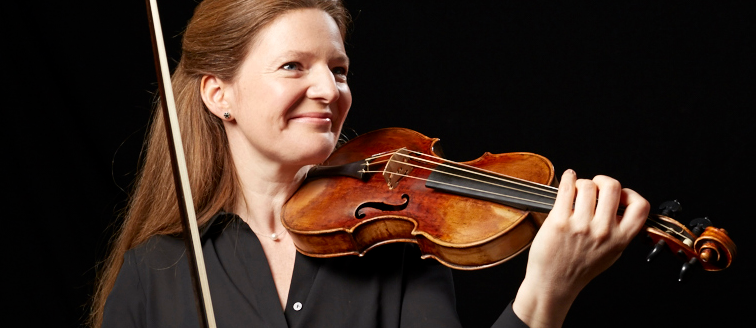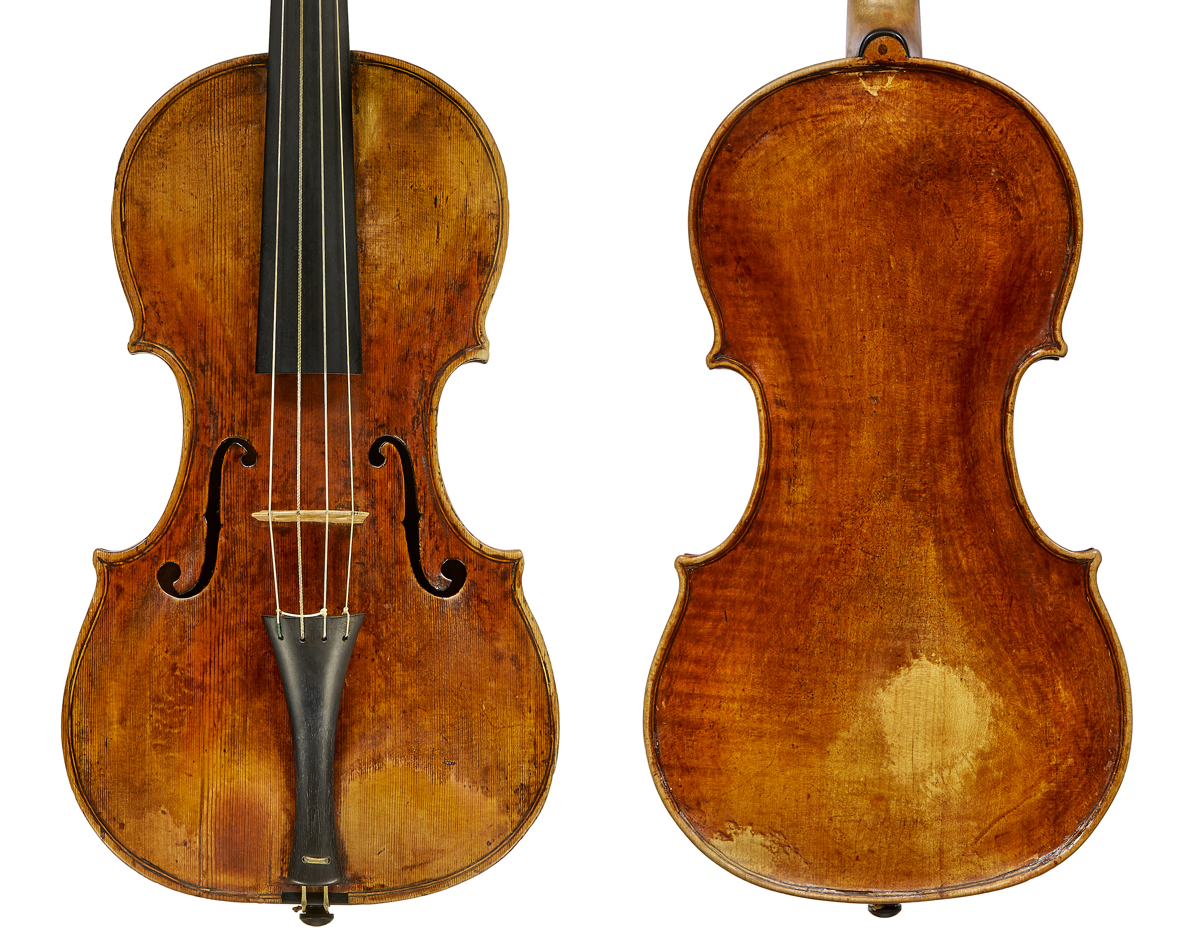Rachel Podger, one of the UK’s leading period violinists and teachers, plays an instrument that is thought to be a rare surviving example by the 18th-century Genoese maker Antonio Pazarini.
How did you find the Pazarini?
I bought it about 25 years ago. I had a beautiful replica of a Stradivari made by Roland Ross in the 1980s. It was a very bright, beautiful, even-sounding instrument, but when Channel Classics approached me about recording the Bach Solo Sonatas and Partitas I decided I needed something that had a bit more depth. I really hankered after having something old, from Baroque times specifically.
So I started looking and it took me a long time, about six years. I looked wherever I was and I played lots of violins, which was an education in itself. I was in Holland, Spain, Australia, but never really found my soulmate instrument. At the time I was living in London and I was always pestering places including Bridgewood & Neitzert, who were my regular supplier of gut strings, about what violins they’d got. It was in the days of answering machines at home and I got back from a tour and there was a message saying, ‘We’ve got this violin that you might like, why don’t you come in and try it?’

Rachel Podger with her Antonio Pazarini violin. Photo: Theresa Pewal
So I went straight there and that’s where I met the Pazarini. It was love at first hearing – its sound was really rich and beautiful. As it was in modern set-up, I agreed to go ahead and have it restored to the original set-up. It’s always a bit of a gamble to go through the process of ‘re-Baroquing’ as you can’t really tell how the violin will sound when it has the proper set-up. And of course there are different theories about it, and it depends on the actual proportions of instrument as well as the player.
Were you involved in the process of reverting it to Baroque set-up?
The new neck was actually tailored to my hand, which was an amazing luxury. I went in at least three times to try it. I could have been more fussy. You know if it feels really uncomfortable of course, but sometimes you think, ‘That feels fine, I could get used to that,’ and it’s quite tricky then to decide how much further to go with it because if you shave wood off it won’t just grow back. It’s not like a haircut!
How did it sound when the work was finished?
When I got the violin back in its final form it was amazing. It did take a while to settle, especially the E string, which sounded quite tight. So we fiddled around with the bridge and the position of the soundpost a lot and the sound definitely changed. The E string really opened up, which was amazing to witness. I enjoyed trying things out, and of course that job is never really finished. A violin feels a bit like a living being which lives with you and your own development through your playing. So things need tweaking every now and again.

Podger’s violin is labeled, ‘Antonius Pazarinius et Calcanius, Genua 1739.’ Photo: Tarisio
What types of period bows do you use with the Pazarini?
I don’t have any original bows although I have borrowed a really beautiful Dodd bow for Mozart in the past and that was absolutely magic. I have four bows by the French maker Rene-William Groppe. His bows are beautifully strong and alive – you pick one up and you just know it is going to speak really well. I haven’t come across a bow by him which doesn’t do that.
My earliest Groppe bow is a very early 17th-century copy which I use for music from the first half of the 17th century. I also use it for Biber. It plays that kind of style really well. It’s light, but because the wood is so strong it speaks really well and it doesn’t fly off the string too early. You can play fast but very clearly and it also does chords really well. Then I’ve got what I call my ‘Baroque bow’. It’s a French model from about 1720 and I play Bach with that and most High Baroque music.
‘What I call my “Baroque bow” is a French model from about 1720 and I play Bach with that and most High Baroque music’
I also have an early Classical bow by Groppe. Actually I have three Classical bows. One is by Pieter Affourtit – that’s my favourite at the moment, the balance is brilliant. Then the third one is by the Belgian maker Pierre Patigny, which I bought at an early music fair in Austria and is brilliant for early Haydn.
I find it quite tricky with Classical bows to tell exactly what they’ll do. Of course there’s a lot of adapting going on when you pick up a new stick; sometimes it’s hard to judge how much you’re compensating and how much the stick is giving. I find that much easier to do with Baroque bows for some reason, but with Classical bows there seems to be a wide spectrum of what they’ll do. So that’s why I’ve got so many.
I’ve got a fourth bow by Groppe which is very heavy and has a very square-shaped head. It does chords brilliantly but it’s quite hard to play pianissimo with it. It’s like driving a tank! That one is quite tricky so I don’t play it so much now.
Bows are transient beings, they come and go. For me, the instrument is more like your soulmate and then the bows are a bit like your breath – they help the instrument sing, and so you tend to go through different ones in your life.
Do you see yourself looking for a different violin in the future?
Of course I keep an open mind but I am pretty happy at the moment. Your ears do prick up if you hear something else, but it’s a restless state of mind looking for a violin. It’s nice to have settled on an instrument and not to worry about it. I do have the luxury of being able to use the instruments at the Royal Academy of Music if I need and they’re gorgeous. But when I come back to mine, even though it might not be as valuable, it feels like coming home.
Rachel Podger plays her Pazarini violin at London’s Wigmore Hall on Saturday 28 September.